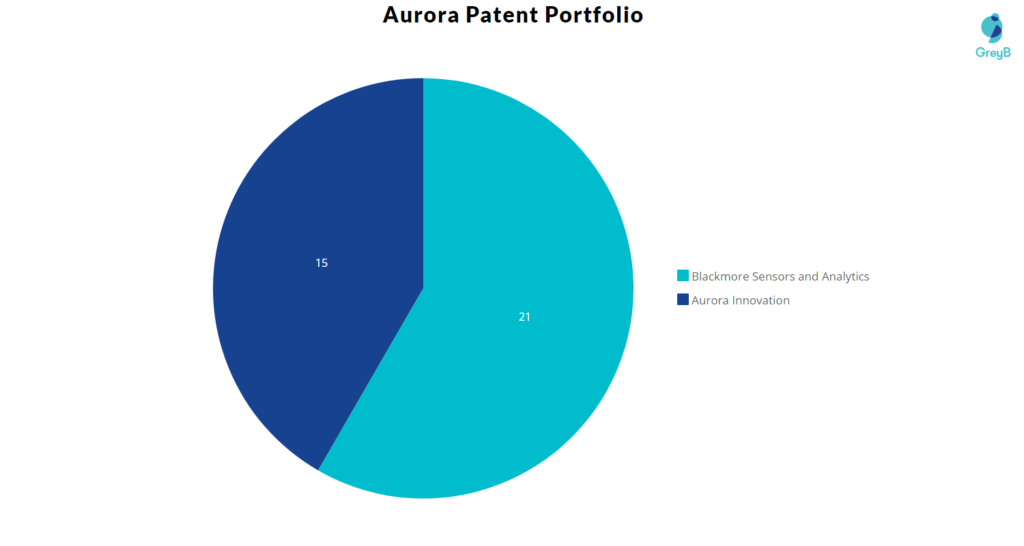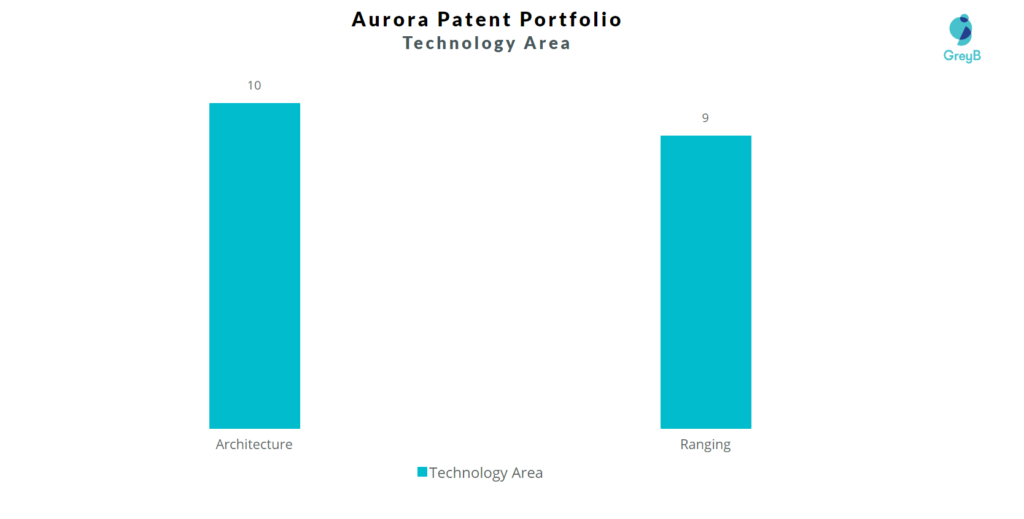“Uber, Lyft, FedEx, Amazon, These are all companies that we don’t need to replicate, but we can make their businesses stronger.”
~ Chris Urmson
Aurora is building an ecosystem of self-driving with powerful, independent, and robust technology. Its driving platform is designed to adapt across a variety of vehicle types and industries.
It has also partnered with leading transportation companies—including ride-hailing network Uber, truck-manufacturers PACCAR and Volvo Trucks, and the world’s largest automaker Toyota— to deliver the Aurora Driver in both trucks and passenger vehicles.
Regarding its patent portfolio, Aurora Innovation has 109 worldwide patents belonging to 36 patent families. These 36 families have been divided into five sub-clusters to better understand its technology and R&D profile. If you want to know the key highlights of Aurora Innovation patents, we covered them here: 11 Key Insights on Aurora Patents

Composition of Aurora’s Patent Portfolio
58% of patent families in Aurora’s patent portfolio belong to Blackmore Sensors and Analytics– the company which Aurora acquired in 2019.
The patents assigned to Blackmore sensor and analytics are on LIDAR systems. While patents assigned to Aurora Innovation cover the use of machine learning to deliver safe self-driving.

Aurora also acquired Uber ATG in 2020, that brought access to Uber’s talent and also to a ride sharing network that could one day power Aurora self driving vehicles and could put it ahead of its competition.
This analysis doesn’t include Uber ATG’s patents. But we covered ATG separately here: What is inside Uber ATG’s Patents Portfolio?
Now let’s explore each of Aurora’s sub tech cluster one by one.
Aurora’s Patent Portfolio – LIDAR (19 patent families)
Aurora’s LIDAR patents are based on Ranging and Architecture of LIDAR systems. The company claims that its LIDAR-based systems can prove to be a gamechanger in the automotive sector that allows the Aurora Driver to identify and track objects faster and with greater precision.

Architecture (10 patent families):
The architecture cluster contains patents on the optimal scanning of the LIDAR-based system via advanced hardware. This includes the methods for refractive beam steering (WO2020142546A1) via multifaceted deflector (WO2020142553A1) to improve the scan patterns (WO2020028146A1) associated with the LIDAR. This scanning mechanism can help in the prevention of collisions and ensure smooth autonomous driving.
Interesting Patent: The patent US10775804B1 involves an array of sensors that helps in the velocity determination of the vehicle based on the field of view of the multiple optical sensors.
Ranging (9 patent families)
The ranging subcluster involves the transceivers (WO2020219145A1) associated with the LIDAR.
In a LIDAR system, light is emitted from a rapidly firing laser. The distance of the object is determined by the return time of the laser that is detected by the receiving end of the LIDAR.
The patents involved in this cluster relate to the optical detection of the signals emitted via a LIDAR and hence steering the autonomous vehicle.
For example, WO2019023529A1 discloses a method of the determination of the range of the object via a digital chirp signal. Chirp signals use long optical pulses with low peak power. This ensures excellent range accuracy based on the bandwidth of the signal and the chirps also solves the problem of high resolution in the LIDAR systems.
Aurora’s Patent Portfolio – Localization and Mapping (8 patent families)
Maps are essential for understanding where the vehicle is in the world. The present patent cluster deals with the creation of the point cloud (WO2019191292A1) using the synergy of the data acquired from different sensors. This also included learning from the collective efforts of the fleet and encoding the information in the form of a map (US20200400821A1).
US10632942B1 is an interesting patent in the cluster. It discloses a vehicle sensor interface that includes an array of sensors to capture one or more objects in the environment and generate sensor data based on the labeling information.
Aurora’s Patent Portfolio -Autonomous vehicle Control (2 patent families)
The patents in this cluster are focused on the reliable handling of the autonomous vehicle in all circumstances like rain, fog, etc. Patent KR20200138817A, for example, discloses the determination of the yaw parameters of vehicles moving in the vicinity of an autonomous vehicle.
Another patent of the cluster is US10747223B1.
Aurora’s Patent Portfolio – Artificial Intelligence (4 patent families)
This cluster contains patents related to machine learning. The patents in the cluster are on using vehicle sensor data for generating training data (WO2019199475A3). This is then used for training deep learning-based models for image analysis (US20190156151A1), perception, state estimation, and decision making.
Aurora’s Patent Portfolio – Simulation (3 patent families):
Virtual Testing is an advantage that enables and fastens the deployment of self-driving vehicles. The Simulation cluster discloses the methods of extensive automation testing to ensure that vehicles operate with utmost safety.
This includes the generation (WO2020091834A1) and labeling (WO2020091833A1) of the training instances for the simulation purposes and hence training the autonomous vehicles, with the help of several models based on AI.

